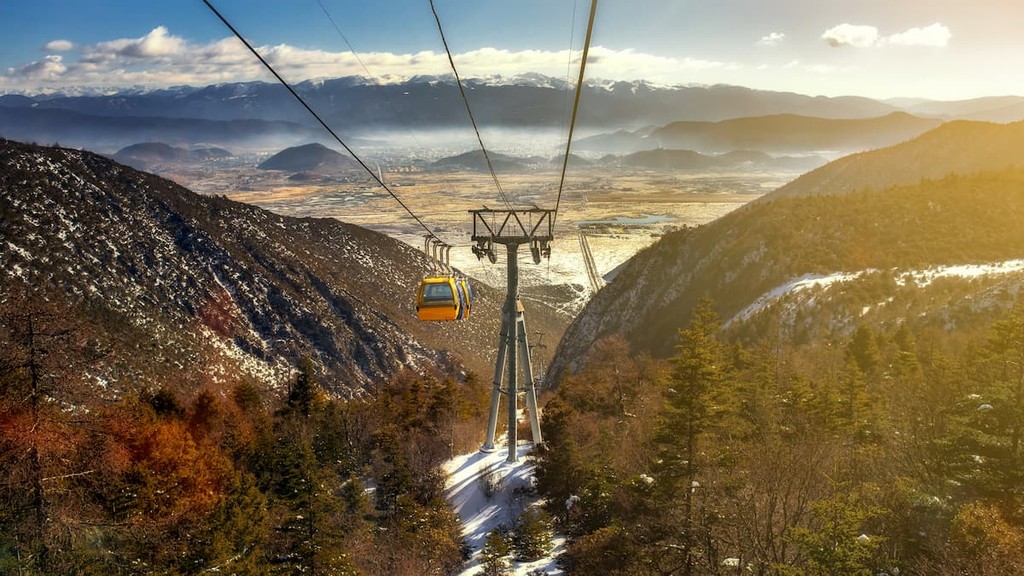Get PeakVisor App
Sign In
Search by GPS coordinates
- Latitude
- ° ' ''
- Longitude
- ° ' ''
- Units of Length

Yes
Cancel
Share ×

Scan the QR code and open PeakVisor on your phone
❤ Wishlist ×
Choose
Delete
The Jade Dragon Snow Mountains, or Yulong Xueshan in Chinese Pinyin, are a compact mountain range in Yulong Naxi Autonomous County, Lijiang, Yunnan Province, China. These peaks scrape the heavens 15 kilometers north of Lijiang Old Town and are visible from nearly anywhere within the city. The Jade Dragon Mountains are sacred to the Naxi and other ethnic groups inhabiting Lijiang. The area attracts many domestic and international tourists, offering a cable car and scenic views featuring snow-capped peaks, glaciers, alpine meadows, and old-growth forests. Among 3 named peaks, Shanzidou (the Jade Dragon mountain) (扇子陡) is the highest at 5,596 m / 18,360 ft.
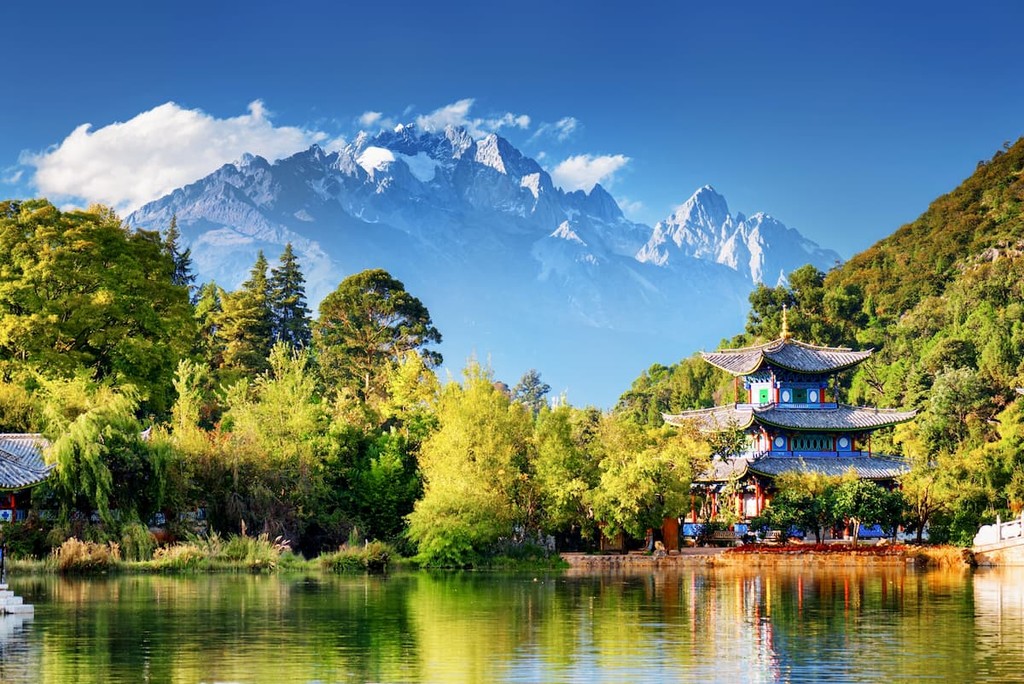
The Jade Dragon Mountains proudly erupt from the northern reaches of Yunnan Province in south-central China. They are situated at the southeastern terminus of the Tibetan Plateau - these mountains represent the southernmost glaciated peaks of the entire Alpide Belt. They are also nearly the easternmost, although some of the Sichuan Mountains, like the infamous Gongga Shan, are further east.
The Jade Dragon Snow Mountains can be classified as a massif or a small range. However, they fall within the much larger Hengduan Mountains, itself a subrange of the Himalayas.
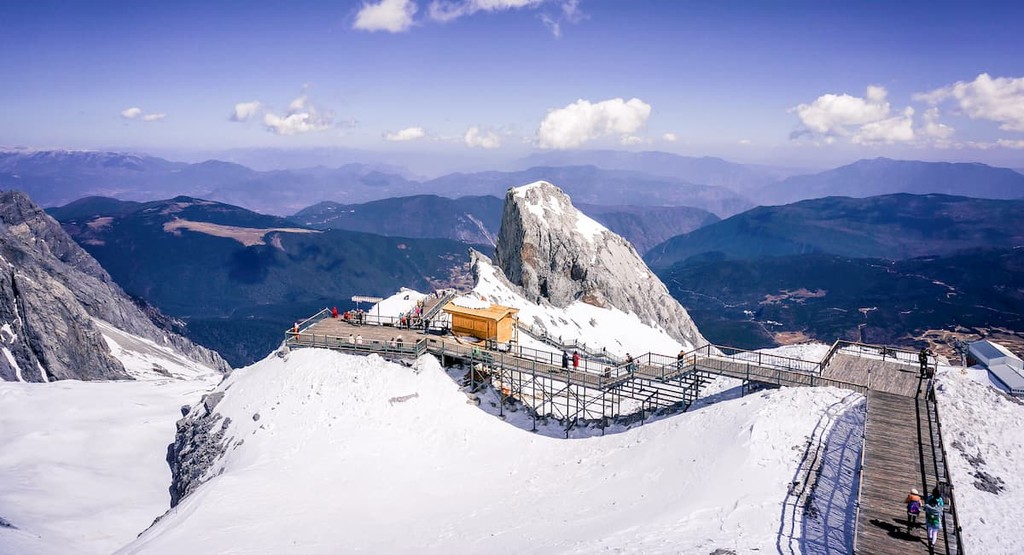
The aptly named Jade Dragon Snow Mountain National Scenic Area protects the mountains. The protected area is about 34,000 hectares (84,000 acres) and is accessed by three cable cars available to the public:
The city of Lijiang, China, encapsulates the Jade Dragon Snow Mountains as well as the surrounding region. While it’s considered a ‘prefecture-level city,’ you can think of Lijiang as a county or even a small state; it’s about the size of the US state of Vermont and half the size of the Netherlands (21,219 sq. km / 8,193 sq. mi). The city’s population is about 1.2 million, spread fairly evenly across four counties and one district, the Gucheng district.
Lijiang is rural by Chinese standards; the population density is 59 per ㎢ compared to an average of 152 throughout China. Much of western China is interspersed with inhabitable deserts and towering peaks and is largely unpopulated. China’s eastern half likely features a population density closer to three or four hundred per ㎢, further accentuating the rural nature of Lijiang.
The Gucheng district is the city government's seat and Lijiang's urban hub. It is the home of the Lijiang (or Baisha) Old Town, a UNESCO World Heritage Site. The Old Town sits just 15 kilometers south of the Jade Dragon Mountains.
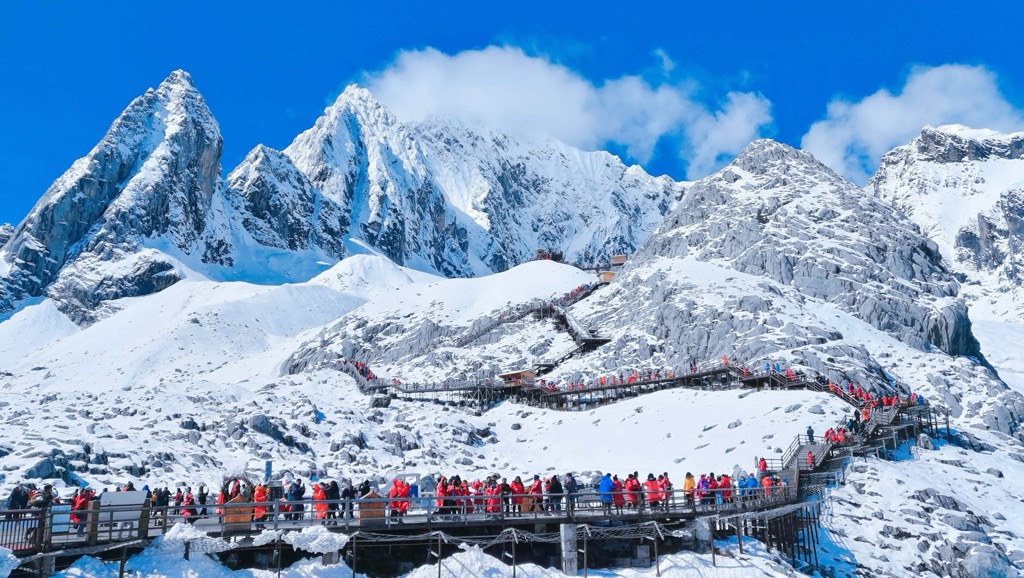
Lijiang is known as one of the more ethnically diverse cities in China. In a nation that is 92% ethnic Han Chinese, Lijiang is 43% Han, 20% Naxi, and 20% Yi (a dozen or more other ethnicities comprise the remaining population). The Naxi have historically inhabited the valley regions, while the Yi People are traditional hill farmers, tending to vast rural expanses of terraced hill farms.
Nearby protected areas include the Yunnan Golden Monkey National Park and Pudacuo National Park, both located north of Lijiang.
The Jade Dragon Snow Mountains occupy a transition zone of powerful geologic forces. The Yulong Xueshan is part of the Alpide Belt, a zone of orogenic activity extending 15,000 km (9,300 miles) from the Atlantic Coast of Spain and North Africa to the Pacific Islands of Southeast Asia.
The Alpide Belt is the product of the collision of the northward-moving African, Arabian, and Indian plates with the Eurasian plate. The orogenic period began about 65 million years ago and continues today, mainly along the boundary of the Indian and Eurasian plates. The Himalayas and the Tibetan plateau, the product of this ongoing collision, are the Alpide Belt’s newest addition.
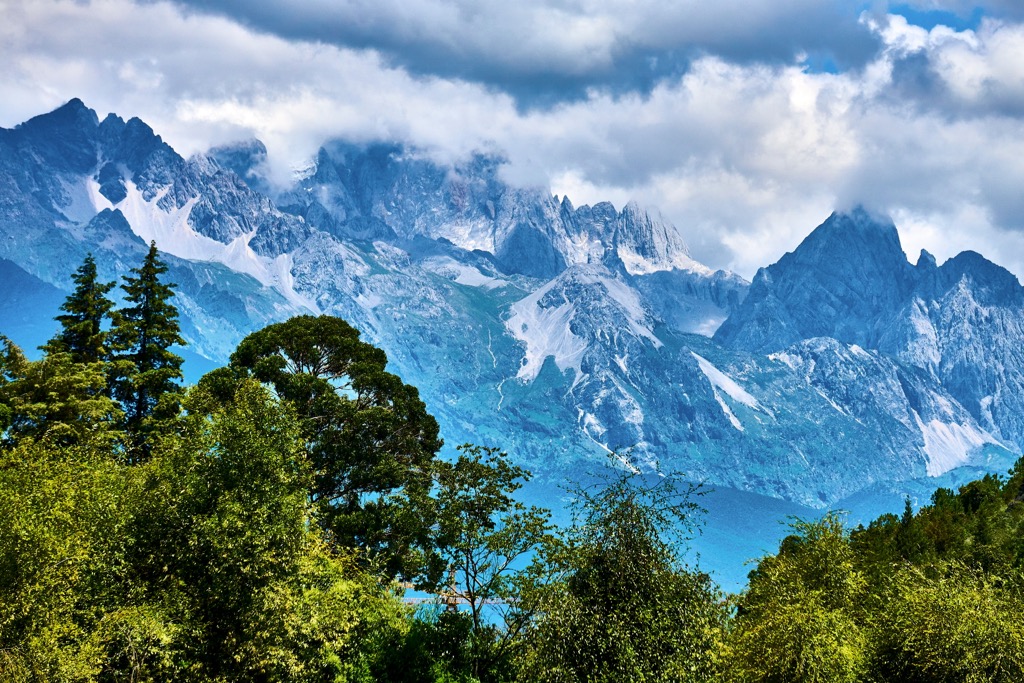
However, within the context of geologic time, all of the mountains along the Belt are relatively the same age. The Alpide Belt is a defining geologic feature of our age, similar to the way Pangea was about 200-300 years ago.
The massif occupies a transition zone as the Tibetan Plateau diminishes and the Alpide Belt sags southward and diminishes. South of Jade Dragon, the mountains subside into subtropical and even tropical rainforests toward the Myanmar border. This transition zone is sometimes referred to as the Yunnan Plateau.
Despite its enormous altitude of over 5,000 meters (higher than any mountain in Western Europe of the contiguous US), the massif is limited in glaciation by its location along the 27th parallel. The Yulong Xueshan is well within the tropic of cancer, hence the subtropical forests along the lowest elevations of Lijiang City.
The massif exists on the southeastern fringes of the Tibetan plateau at about 2,000 m (6,600 ft) at its lowest; 92% of Lijiang City is above the 2,000-meter mark. In contrast, the central regions of the plateau are about 3,000 - 4,000 meters (10,000 - 13,200 ft) at the valleys.
Nevertheless, significant glaciers still occupy the massif, primarily on the flanks of Shanzidou (Jade Dragon) above 4,500 meters. Even the massif’s lowest slopes exhibit telltale signs of quaternary glaciation, such as large U-shaped valleys and moraines.
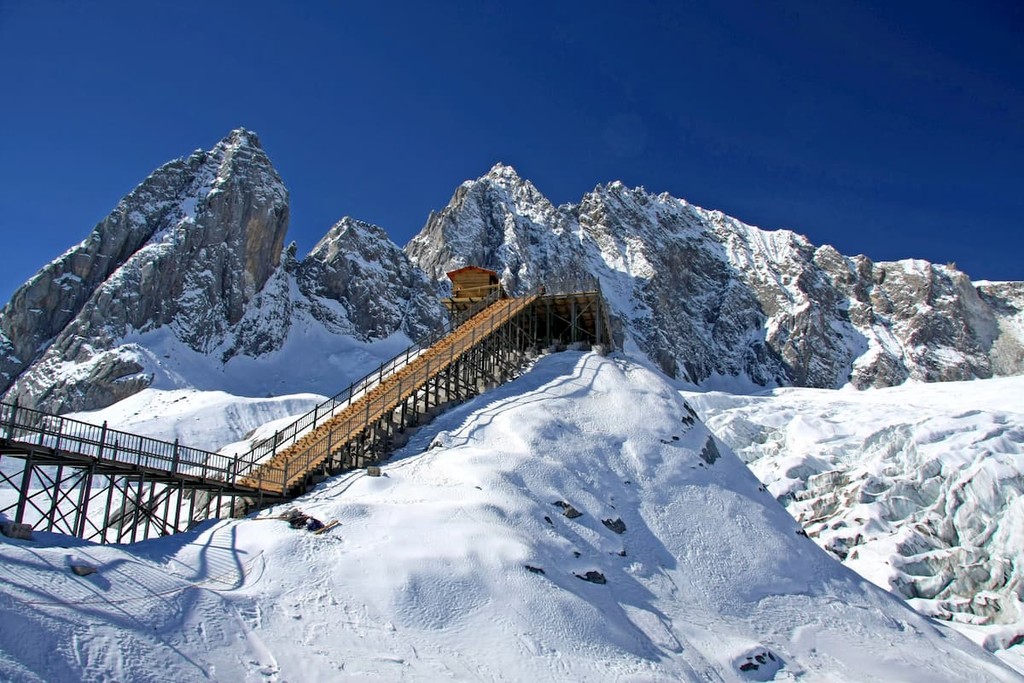
The Yulong Xueshan violently erupted from the Earth’s crust beginning only tens of millions of years ago, a blink in geologic time. The explosion of crust exposed sedimentary, igneous, and metamorphic rock layers.
Volcanic activity in the region has also resulted in some layers of volcanic rock scattered throughout Yunnan Province's slopes.
The Jinsha River’s headwaters form further north in the Hengduan Mountains, among the eastern peaks of the Himalayan Plateau. The river runs through Lijiang twice, forming a massive arc around the Jade Dragon Mountains. On the west side, the Jinsha runs north, cutting out the famous Tiger Leaping Gorge. It doubles back and heads south about 20 km (12.2 mi) west of the Old Town, eventually merging with the mythical Yangtze River.
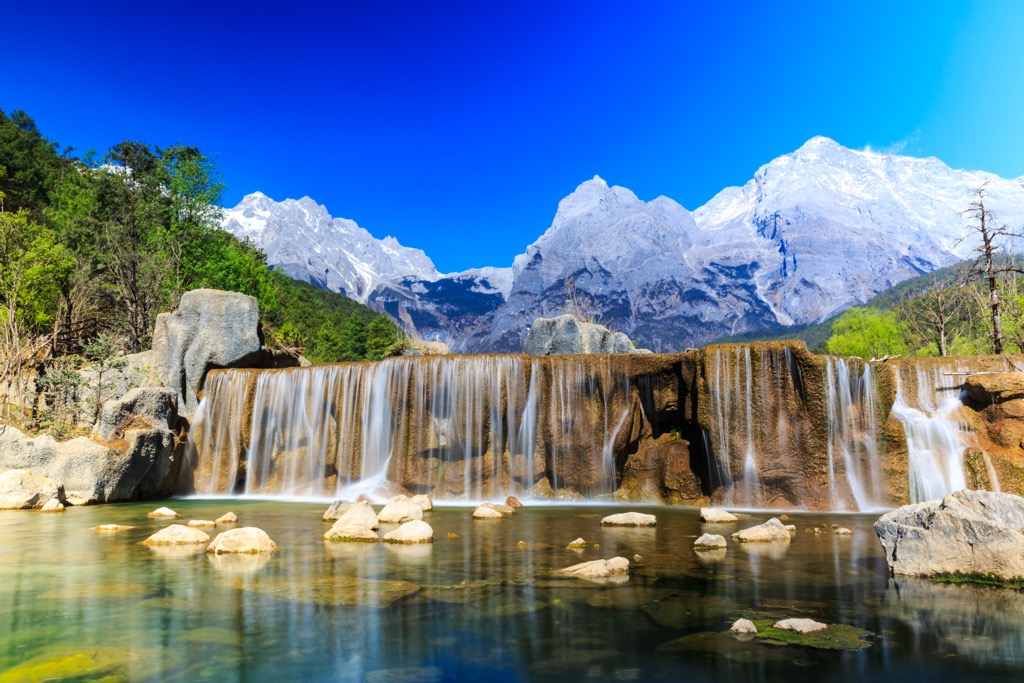
Lijiang and the Yulong Xueshan sit at the convergence zone of two massive tectonic plates. The Himalayas didn’t erupt from the Earth’s crust without protest; billions of earthquakes have shaken the region in the past few million years. Most of these quakes are small, while others are tremendously powerful.
The Lijiang quake was toward the powerful end of the spectrum. Its measurement of 6.6 on the moment magnitude scale was sufficiently powerful to destroy 350,000 structures in the region, killing over 300 and injuring 17,000 people. A quake of this magnitude would have largely spared other earthquake-prone cities in developed countries, such as Los Angeles. However, much of Lijiang’s infrastructure was ancient or poorly built.
The earthquake was an inflection point for the town in ways nobody could have predicted. The town made an effort to rebuild itself in its former image, replacing high-rise apartments (many of which were irreparably damaged in the quake) with traditional family homes.
The following year, Lijiang became a UNESCO World Heritage Center and, within ten years, was hosting more than five million tourists per annum.
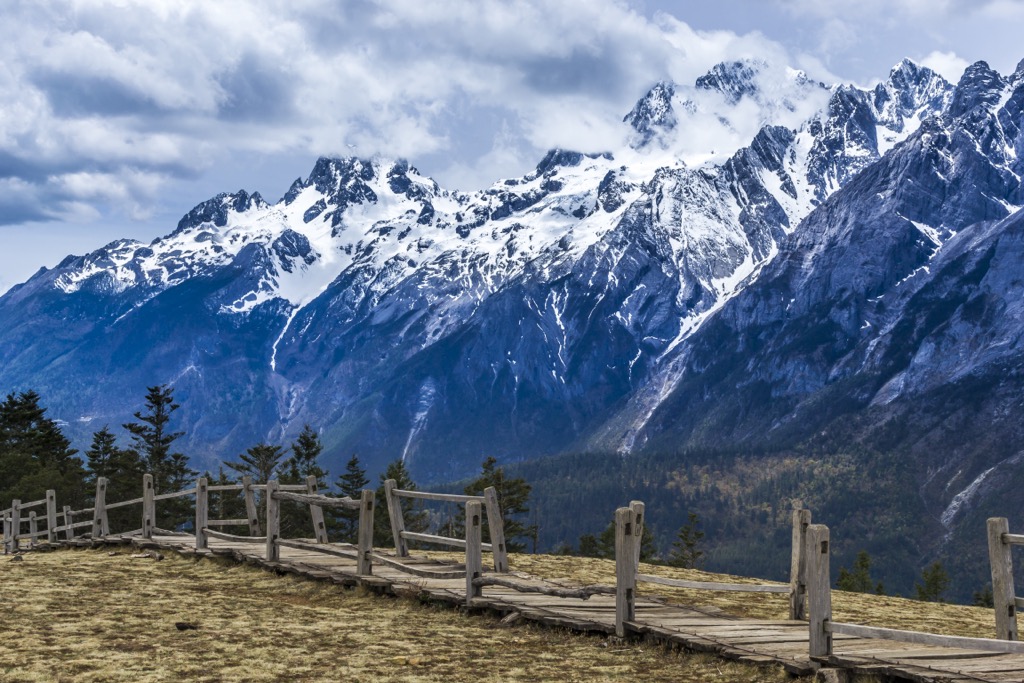
The Jade Dragon Snow Mountains, together with the valleys of Lijiang, comprise one of the world’s foremost biodiversity hotspots. They may be the runts of the Himalayas, but these mountains are far more biodiverse than the high deserts and ice fields of their bulkier brethren.
Altitudinal variations of almost 4,000 meters (13,200 ft) are one source of this biodiversity. Another important source is the subtropical forests of the lower valleys. As you continue south through the Yunnan Province and descend from the Tibetan Plateau, subtropical forests merge with the tropical rainforest, especially near the border with Myanmar. Yunnan Province represents just 4% of China’s landmass but is home to half of the nation’s biodiversity.
The Yulong Xueshan’s Alpine Zone features little life above 4,500 m (14,800 ft), where permanent ice and snow dominate. Spruce-fir montane forests dominate the median altitudes, transitioning to temperate and subtropical forests in the foothills and valleys. Oak (Quercus guajavifolia) and maple (Acer pectinatum) are two examples of Asian subtropical variants of two genera common throughout the Western world.
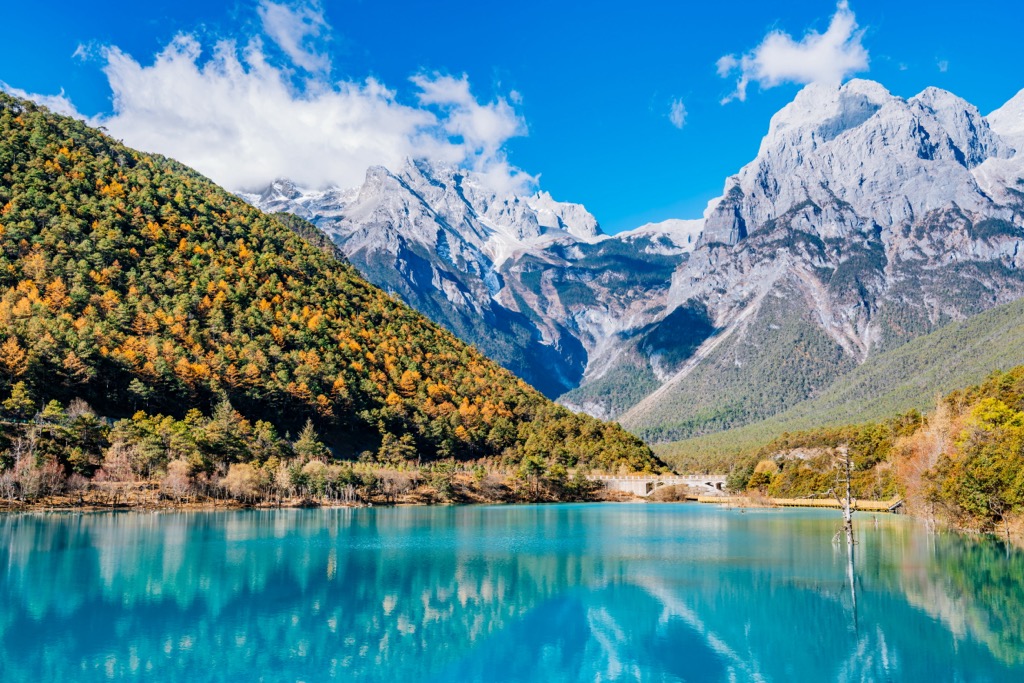
Descending toward 2000 m (6,600 ft) and below, we see the emergence of the critically endangered Yunnan Plateau subtropical evergreen forests featuring broadleaved evergreen trees like Quercus schottkyana. These forests have proven highly susceptible to human encroachment. The ecoregion is also ideal for agriculture, like rice cultivation, and felled forests are outcompeted by species like Yunnan Pine during succession. Only a few strands of subtropical broadleaf evergreen forest remain in Yunnan.
Unfortunately, Lijiang and the Yunnan Province as a whole are facing many ecological issues. These issues are longstanding and are due fundamentally to the desirability of the climate, both for humans and many other forms of life.
The Yunnan features a stable climate between the Himalayas and the tropics to the South and has avoided significant glaciation during ice ages. This is the basic principle spawning the incredible biodiversity of the tropics. However, the region's altitude and slightly cooler temperatures have also made it prime habitat for human beings.
The first anatomically modern humans arrived around 100,000 ago. Hill farming technique has spread for the last several thousand years. Currently, almost all of the Yunnan province is fragmented by terraced hill farms and valley development. As a result, most keystone large mammal species have been extirpated, including the giant panda, Asian elephant, Javan rhinoceros, and Bengal tiger.
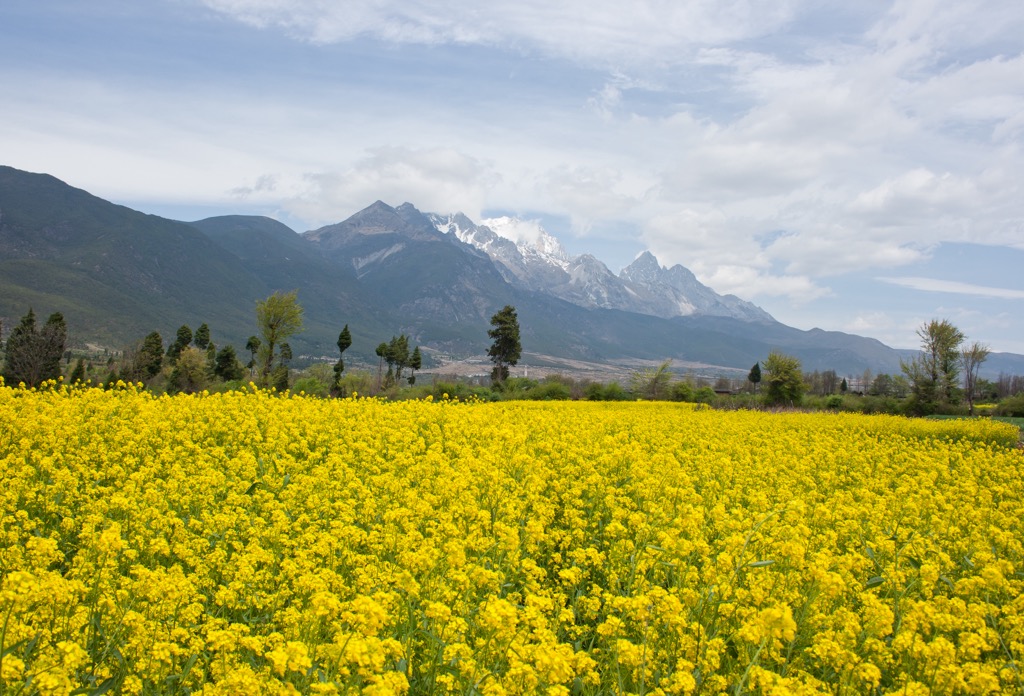
Few stands of old-growth forest remain, mostly confined to steeper hillsides and regions unsuitable for agriculture. Notably, very little of Yunnan Province is governmentally protected, especially compared to Western nations, where vast tracts of land are protected under complex management hierarchies.
However, Yunnan farmers live in relative harmony with the land. They use fewer resources than Westerners, and their carbon footprint is a fraction of the average European or American.
As I’ve mentioned, there is evidence that humans arrived in Yunnan around 100,000 years ago. Early populations likely settled and thrived in the region’s climate, which was well-suited for human life. It was also rich in water and game.
Several thousand years ago, society pivoted to agriculture, and populations soared. Lijiang became a nexus of civilization in Southeast Asia. Eventually, the Baisha Old Town became the political, commercial, and cultural hub for ethnic Naxi People, and some iterations of the Southern Silk Road (or Ancient Tea Route) passed through the town.
Lijiang was relatively autonomous for the first tens of thousands of years of human settlement. After the turn of the first millennia, the kingdom submitted first to Khubilai Khan and then to several Chinese dynasties. However, it remained relatively autonomous and is still one of the few Han-minority regions in China.
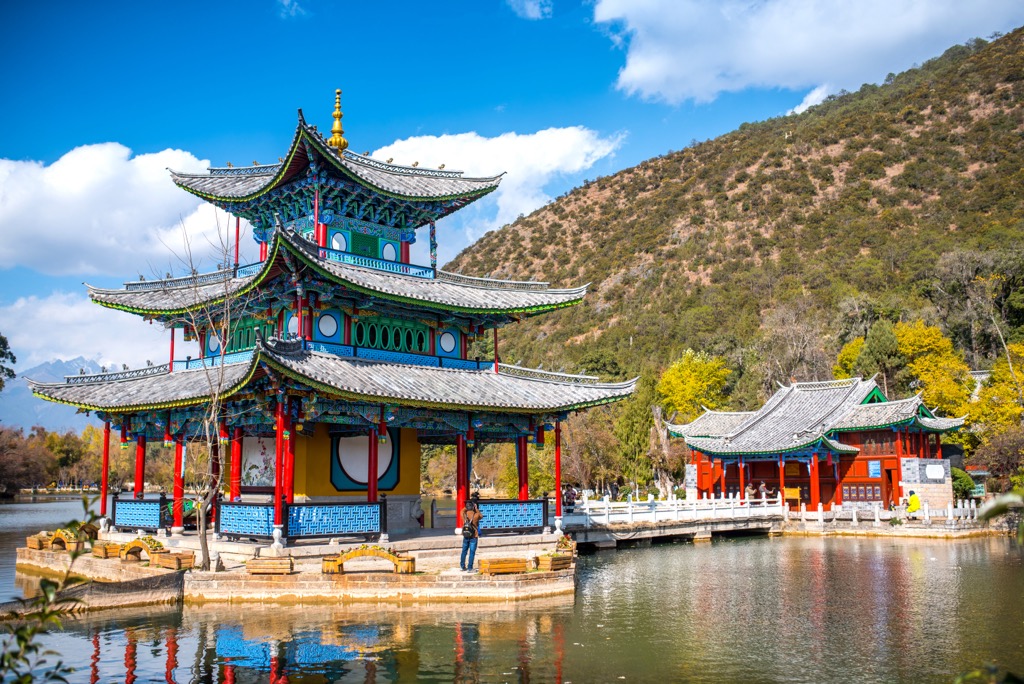
Lijiang even managed to avoid most of the destruction of Mao Zedong’s revolution, in which many of China’s historical relics were destroyed and lost forever. The idea at the time was to be rid of the old to make way for the future.
Jade Dragon Snow Mountain has proved an elusive prize for mountaineers. In 1938, a mountaineering expedition headed by Marie Byles, an Australian lawyer, feminist, and conservationist, encountered unfavorable weather conditions and failed to reach the summit.
In 1987, two American climbers, Phil Peralta-Ramos and Eric Perlman, reached the summit of Shanzidou, the massif’s highest point. In addition to vertical technical climbing, they described high winds, sparse opportunities for protection, and high, difficult-to-avoid avalanche danger. The mountain has not seen an ascent since.
By the 1990s, Lijiang Old Town was one of the most, if the most, intact Old Town remaining in China. Tourism slowly became a part of the economy, although the town was still occupied primarily by traditional Naxi People. In 1994, Phil Agland’s critically acclaimed documentary China: Beyond The Clouds was released for English-speaking Western audiences.
Lijiang was devasted in the 1996 earthquake (more detail in the Geology section). However, the quake resulted in a cultural sea change rather than an economic decline. Tourism began to take over, in part due to the inclusion of the Old Town on the UNESCO World Heritage List. In the late nineties, construction began on the three cable cars on Jade Dragon Snow Mountain.
The tourism machine fully kicked in by the early 2000s. In the last 15 years, the city and park have received over four million visitors per annum. The change has brought economic prosperity to the region but has largely reduced the cultural experience of the old town to kitschy tourist shops. Many Naxi have long since departed, cashing in on their properties and retiring elsewhere in Lijiang.
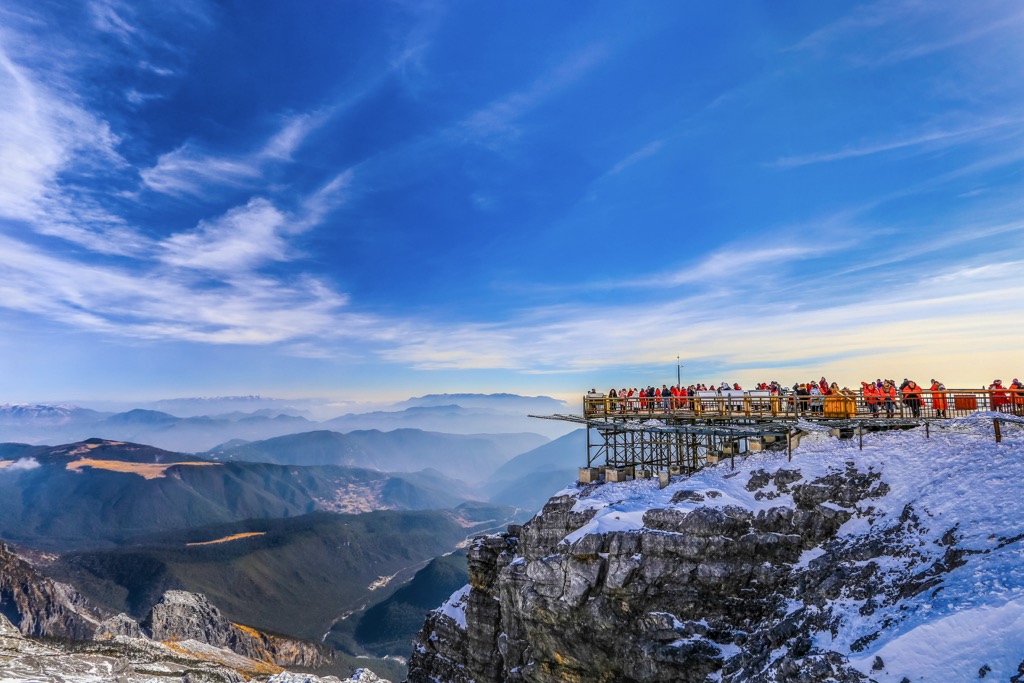
Jade Dragon Snow Mountains Scenic Area is a well-organized and managed tourist attraction.
The area has many scenic spots, including Glacier Park, the Blue Moon Valley (White River), and the Ganhaizi Meadow.
The Glacier Park is on the northeast slope of Shanzidou, the range’s tallest peak. The Cable Car relieves much of the burden of climbing; in fact, because it reaches nearly 4,700 m (15,419 ft), the trek would be impossible for the vast majority of people.
The journey offers unforgettable panoramic views. If nothing else, the experience of gazing upon a maritime glacier at 4,700 m is an experience that very few people will have. Even many experienced mountaineers have never been at this altitude before. Winter offers the best chance for clear, sunny weather, but you will pass through multiple seasons on the ride up in summer.
After entering the Scenic Area, you’ll likely stop at the Ganhaizi Tourist Center. From the Tourist Center, a 20-minute shuttle bus travels through lush forest to the Glacier Park Cableway's lower station, called the Large Cableway.
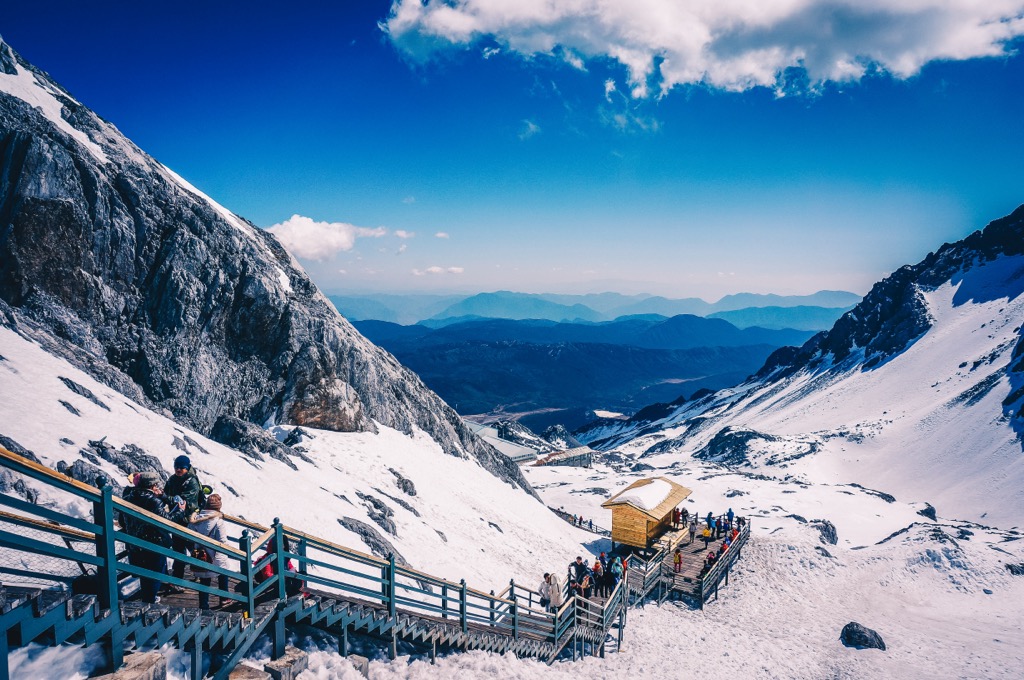
The cableway starts at an elevation of 3,356 m (11,011 ft) and ascends to the upper station at 4,506 m, right under Shanzidou, in about 15 minutes. The Large Cableway is 2,914 m long with a vertical ascent of 1,150 m; it’s also the second-highest in China.
The sudden elevation gain brings incredible variety in scenery, as well as temperature change, shortness of breath, and possible altitude sickness. Warm clothes are imperative, even in the midst of summer. The best treatment for any signs of altitude sickness, such as confusion or loss of consciousness, is immediately descending the cable car. Shortness of breath is expected and isn’t serious as long as it isn’t severe.
After dismounting the cable car, there is another 200-meter-long walkway with an elevation gain of nearly 200 meters. The hike is more challenging than you might think; this elevation has significantly less oxygen than sea level. Oxygen bottles are available for sale if you need them, although they are likely of dubious efficacy.
The Blue Moon Valley (or White River) is set at the massif’s eastern toe, north of the Ganhaizi Meadow and south of the Spruce Meadow.
Its crescent shape and the azure blue lakes gave the valley its name. The white sediment at the bottom of the lakes turns them white when it rains, hence the additional name of White River. The river running in the valley forms four lakes: Yuye, Jingtan, Lanyue, and Tingtao Lake. The valley is accessible by a shuttle bus from the scenic area.
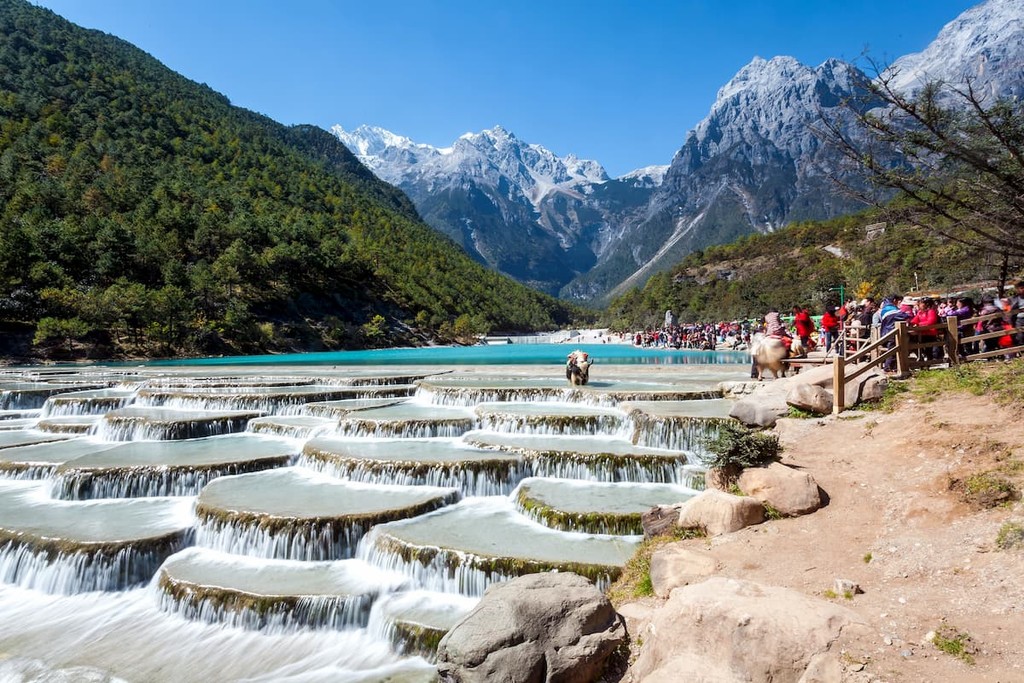
The Ganhaizi (translates as ‘the Dry Sea’) Meadow sits at 3,100 m (10,330 ft). It is a natural meadow lying at the foot of the mountain. Short pine trees and other plants are scattered across the vast, gently sloping alpine meadow. From time to time, you see yaks pass by leisurely. This site is perfect for pastoral-like pictures with snow-covered mountains towering along the horizon in three directions.
The Ganhaizi is the best spot to observe the panorama of the Jade Dragon Snow Mountains. From here, you can see the 13 high peaks of the range running from north to south like a flying dragon. Shanzidou is especially impressive, appearing like an unfolded fan reaching straight to the sky.
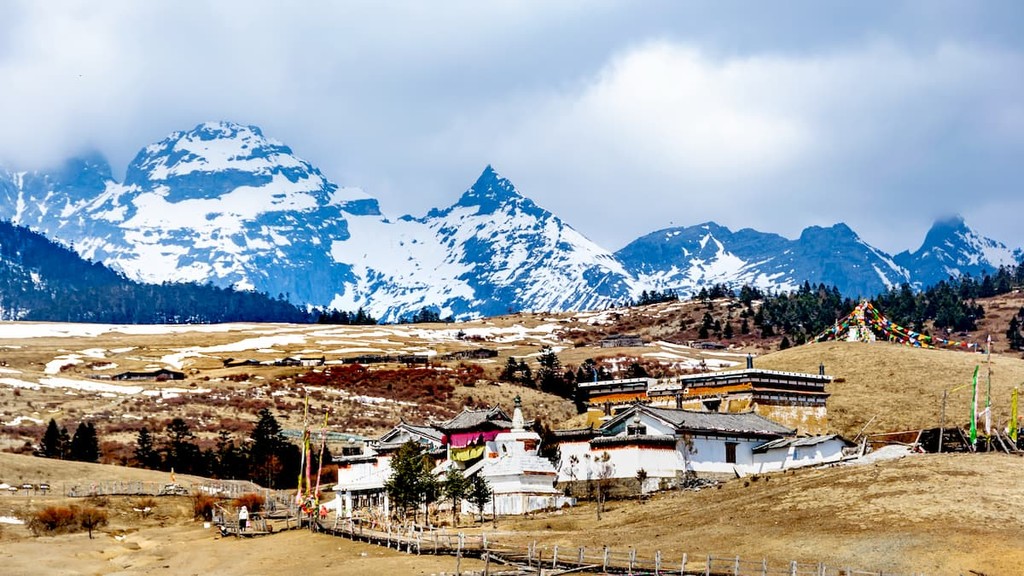
The Ganhaizi Meadow is near the Jade Dragon Snow Mountains Scenic Area entrance, parking lots, and the Impression Lijiang Theater.
The Yunshanping, also known as the Spruce Meadow, is reachable by shuttle bus and the Yunshanping Cableway. At an elevation of 3,240m, you can enjoy a relaxed walk along the plank walkway paved in the spruce forest.
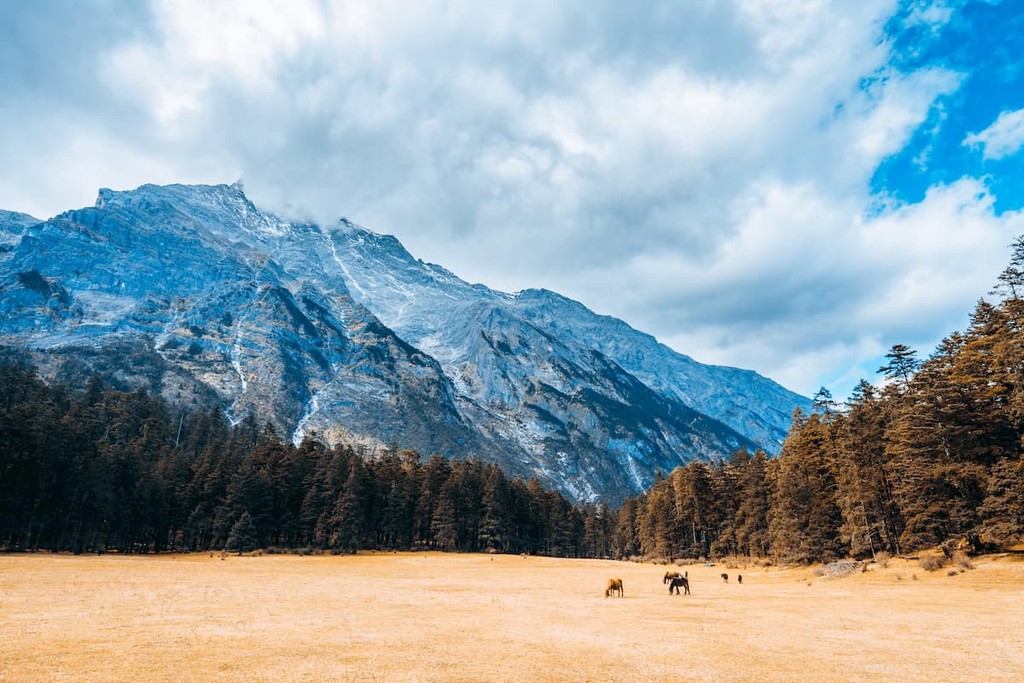
Naturally, the Large Cableway or the plank walkway may be out of service due to bad weather. After all, these mountains are giant and are subject to extreme weather conditions. The best chance for clear weather is during the winter, which is the dry season. Much of the massif’s snow and ice accumulates during the summer monsoon.
There is also a daily maximum limit of tourists (10,000). The trip around Glacier Park usually takes 3 to 5 hours, and it's often the case that you spend a lot of time waiting in line to get on the shuttle bus and the cable car.
Food is available in the park, but you can also bring your own. Notably, you can rent clothes - jackets, pants, sunglasses, etc. - for a reasonable price.
Ultraviolet rays are powerful in the alpine. Depending on the current snow cover and sunniness, you may experience legitimate snowblindness here - that is, temporarily losing your vision because of the brightness. You could also cause permanent damage to your eyes. Exposed skin is likely to be sunburned even in a short time. Therefore, sun protection and glasses are mandatory.
Because of the extreme nature of the outing, it’s best to avoid the cableway if you’re sick. Don't panic if you experience altitude sickness in the park; a health clinic is on-site to provide treatment, but nearly all cases can be resolved by simply descending to a lower altitude. Because the cableway is so quick, it’s improbable that altitude sickness will enter an advanced stage.

Entrance Fee: The Jade Dragon Snow Mountains Scenic Area entrance fee varies from 50 to 105 RMB. This pass lets you visit most spots, including Glacier Park, Blue Moon Valley, the Ganhaizi Meadow, and Yunshanping (the Spruce Meadow). You can buy it at the entrance of the scenic area or online in advance; some online platforms may offer ticket packages that cover the entrance fee.
Cableway Tickets: The three cableways require additional fees, and they are the only method you can take to reach some scenic spots, i.e., Glacier Park. You will need to pre-order the tickets and make an appointment online in advance.
You can buy these tickets through the official WeChat Mini Program of the Jade Dragon Snow Mountains.
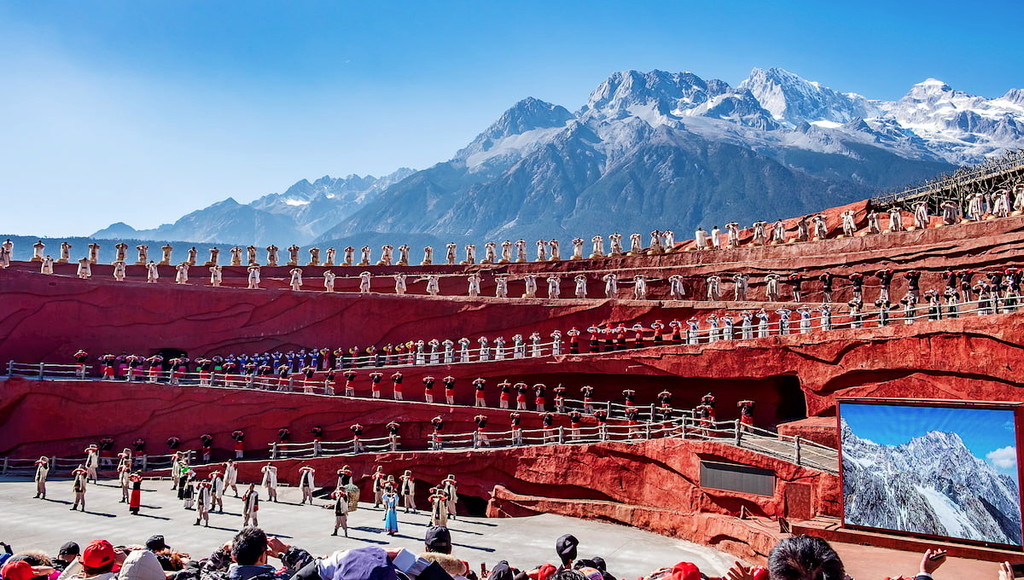
The Jade Dragon Snow Mountain Scenic Area is open from 8 a.m. to 5 p.m. year-round. Entrance limits may apply in high season - only 10,000 people are allowed up the Large Cableway daily. You must make an appointment in advance.
The Black Dragon Pool is just north of the Lijiang Old Town and is renowned for its clear waters, reflecting the majestic Yulong Xueshan, which is farmed in the background between the valley walls. The park is also home to several historic structures, including the Deyue Pavilion, Suocui Bridge, and the Hanyue Stage.
Take a stroll around the pond, but don’t expect to be alone. The Balck Dragon Pool is one of the capstone attractions of Lijiang.
Due to Lijiang’s footprint and drought, the pond would periodically run dry in the spring at the tail end of the dry season. Since 2014, water conservation efforts have succeeded in keeping the pool full year-round.
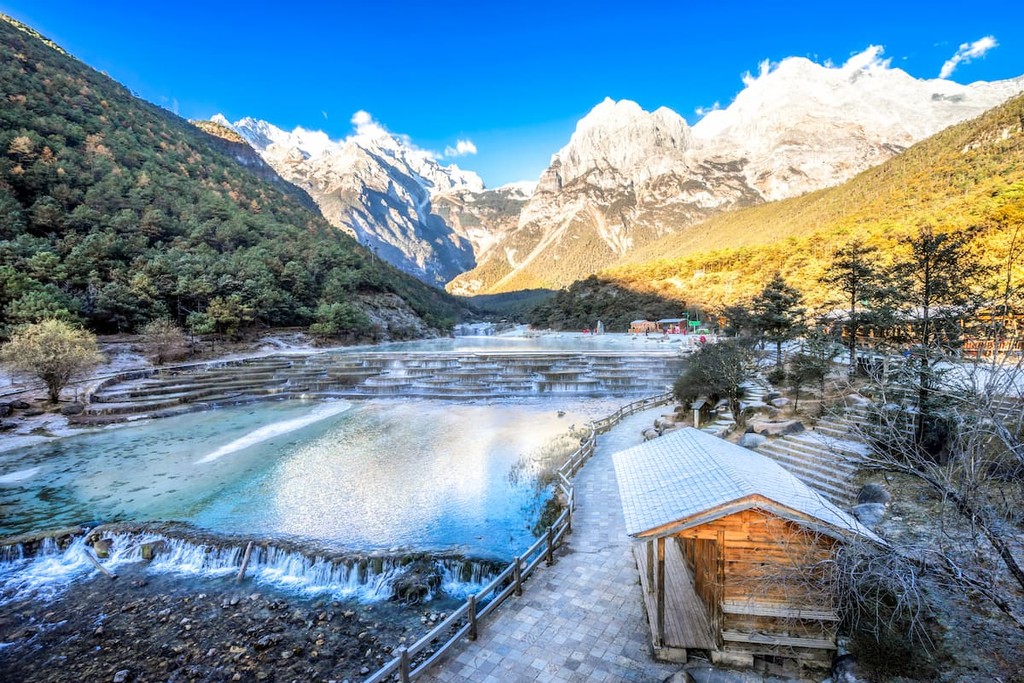
To say Lijiang is a popular tourist attraction would be a vast understatement. The numbers can only be described as mind-blowing, especially by Western standards. In 2010, the Old Town received no fewer than 3.5 million visitors, up 20-fold from 1991.
Lijiang is rich in places of interest, including the renowned Old Town of Lijiang, the Jade Dragon Snow Mountains, the Tiger Leaping Gorge, Laojun Mountain, Shuhe Ancient Town, and Anaguo. It is also a city inhabited by multiple ethnic minorities. The summits of the Jade Dragon Snow Mountains can be seen from the Old Town and many other locations in Lijiang.
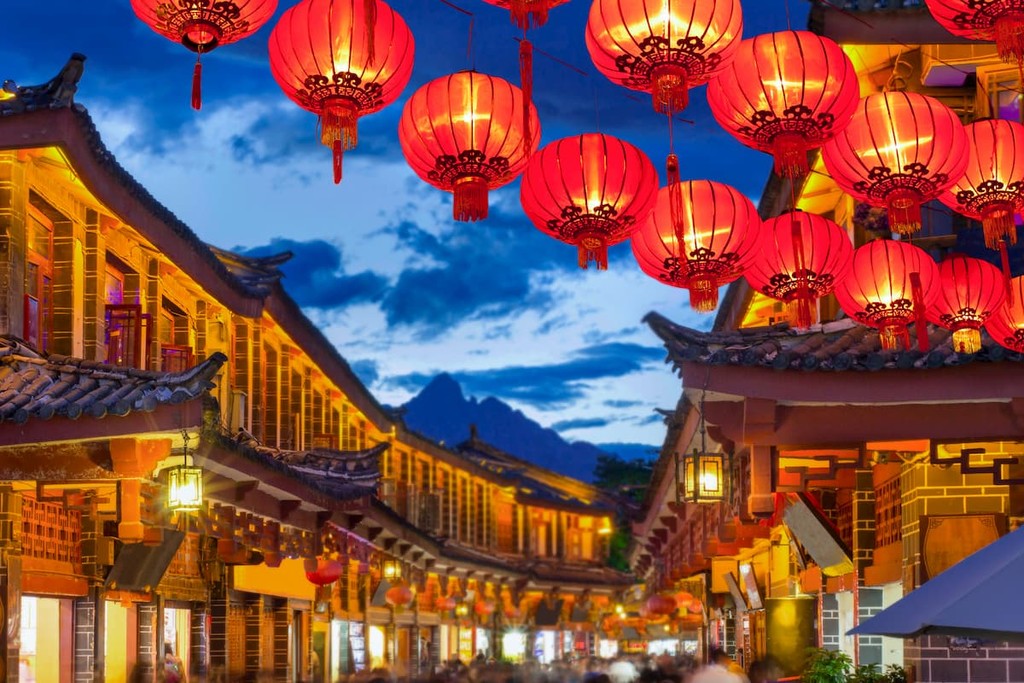
Fortunately for those interested in the history of this ancient city, Phil Agland directed an incredible documentary in 1994 called ‘China: Beyond the Clouds.’ The documentary originally aired on UK television as a 7-part series and was filmed and produced over the course of 10 years. The series was later edited down to two, two-hour segments and is on Youtube: Part 1 and Part 2. The films document the area’s ethnic diversity, from the Naxi of the Old Town to the Yi People of the mountainsides.
I highly recommend that any prospective visitors to Lijiang and the Jade Dragon Snow Mountains watch this series first. You will become invested in the characters' lives and see a Lijiang Old Town that doesn’t quite exist anymore due to tourism and development. As I write this article, I hope these characters have benefitted positively from the sweeping changes of the past 30 years.
While some Western tourists describe present-day Lijiang Old Town as tacky, there’s still plenty to do in the surrounding area. Lijiang offers a litany of natural spectacles between the mountains, forests, rivers, and gorges. Cultural offerings are still abundant in many other parts of Lijiang City apart from the designated Old Town.
Yuhu (Yuhe) Village, also known as Xuesong Village, is a bucolic, tranquil, and ancient village at the foot of the Jade Dragon Snow Mountains. It is the trailhead of many of the range’s hiking trails. The village features stone houses and roads, exemplifying the region’s rural tradition.
Yuhu village is 20 kilometers north of the Old Town of Lijiang. It’s accessible by bus No. 17 or a taxi from the Old Town.
There are the Jade Dragon Snow Mountain Scenic Area special line buses that can pick you up at multiple locations in Lijiang. The line buses are available from 7 a.m. to 4 p.m. for 15 RMB. You can also choose to take a taxi (around 60 RMB) or rent a car to get to the scenic area. If you take a car or a cab, the distance from Old Town is around 15 kilometers (10 miles), and the drive is approximately 40 minutes. Shuttle buses are the only vehicles allowed in the scenic area. All passenger cars must stay in the parking lots near the Ganhaizi Tourist Center.
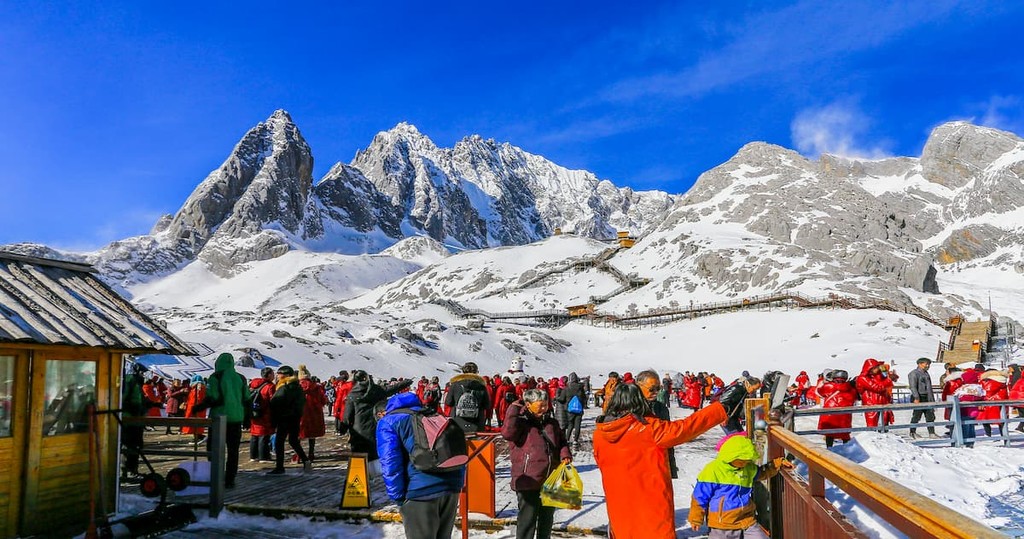
Explore Jade Dragon Snow Mountain Scenic Area with the PeakVisor 3D Map and identify its summits.



